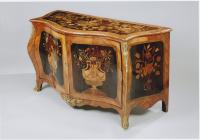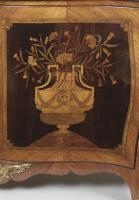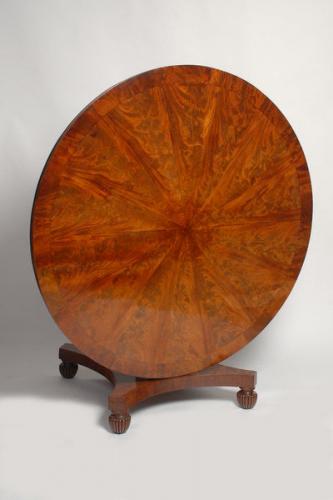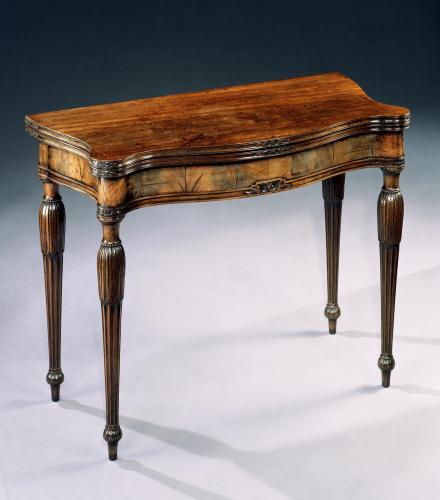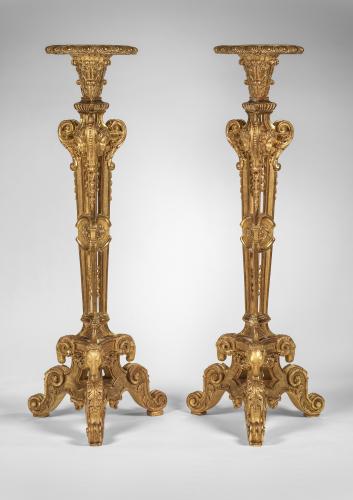

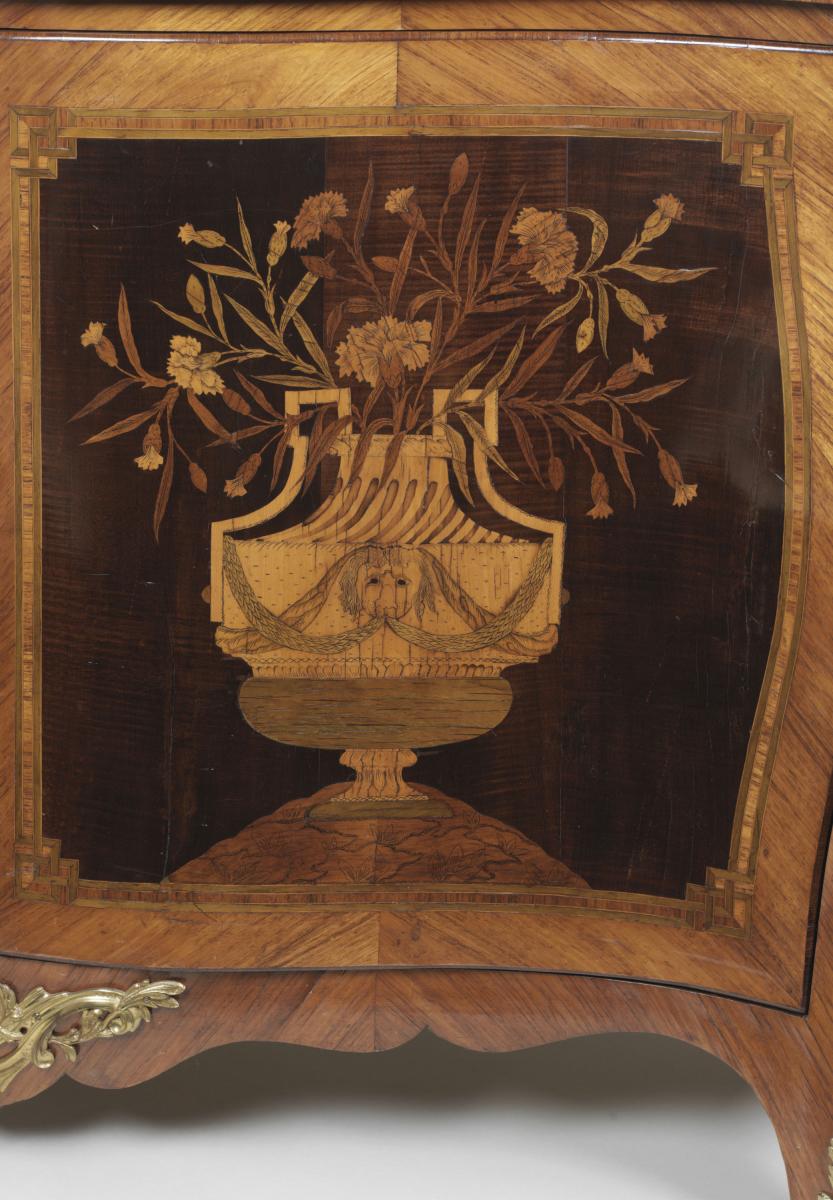
Price on application
This object is eligible for a Certificate of BADA Provenance
The BADA Standard
- Since 1918, BADA has been the leading association for the antiques and fine art trade
- Members are elected for their knowledge, integrity and quality of stock
- Our clients are protected by BADA’s code of conduct
- Our dealers’ membership is reviewed and renewed annually
- Bada.org is a non-profit site: clients deal directly with members and they pay no hidden fees
George III Ormolu Mounted Harewood and Marquetry Serpentine Commode Attributed to Pierre Langlois, Circa 1765.
The top of the serpentine commode is inlaid with a marquetry panel of musical trophy hanging from a ribbon within a foliate cartouche, flanked by sprays of ribbon-tied flowers, on a background of harewood.
It has a broad cross-banded border and moulded tulipwood edge. The doors at the front have wide, cross-banded borders and green-stained banding with Greek key ornament at the angles. The centre is veneered in dark, stained harewood inlaid in the centre of each door with a classical vase filled with flowers, with gilt bronze banding down the side of one door.
The doors open to reveal three graduated drawers with drop ring handles with circular moulded back plates. The sides are similarly veneered and inlaid with a ribbon-tied spray of flowers. The shaped apron with scrolling floral gilt bronze mount and the protruding angles applied with floral and foliate mounts running down to acanthus sabots.
Provenance:
Possibly supplied to Thomas Edwards-Freeman, Batsford Park, Moreton-in-Marsh, Gloucestershire, and by descent with the house to:
John Freeman-Mitford, 1st Baron Redesdale (1748-1830), and by descent to his son.
John Thomas Freeman-Mitford, 1st Earl Redesdale (1805-1886), Batsford Park, Gloucestershire and thence by descent.
Sale, Bruton Knowles & Co., Gloucester, 30 April to 2 May, 1919, lot 387.
Bought by William Hesketh Lever, 1st Viscount Leverhulme (d.1925) from M.Harris and sons 26 May 1919, for £815 and thence by descent.
Literature:
Lucy Wood, 'Catalogue of Commodes', 1994, p. 165, figs. 152-4 and Appendix X3318, p. 332.
The commode belongs to a small number of commodes all of which would appear to have been made by a group of continental craftsmen working in England during the 1760s and 1770s. The best known of these émigré craftsmen was Pierre Langlois who had premises in Tottenham Court Road.
The designs incorporated in the marquetry, in particular the musical trophy inlaid on the top, are very close to schemes of marquetry found on French pieces. The vases on the doors, in the so-called “goût grec”, relate to engravings of Delafosse which were one of the most important sources for French craftsmen at this period.
Dimensions
58.75 x 24 x 31.5 in high (149.2 x 61 x 80 cm)The BADA Standard
- Since 1918, BADA has been the leading association for the antiques and fine art trade
- Members are elected for their knowledge, integrity and quality of stock
- Our clients are protected by BADA’s code of conduct
- Our dealers’ membership is reviewed and renewed annually
- Bada.org is a non-profit site: clients deal directly with members and they pay no hidden fees


